
SHAH ALAM: MIFVs For the Paras. It appears that the Scorpions light tank and Stormer AFV careers with the Army are at the end as the last unit to operate them, the Armor Squadron of 10th Para Brigade is getting seven MIFV K200s. The K200s are armed with the 12.7mm gun hence its designation in the Army as MIFV K200 A1 12.7mm. The vehicles had belonged to the 4 Kompeni Kor Polis Tentera DiRaja (Mekanis) of the Fourth Mechanised Infantry Brigade which hosted the handover ceremony in Kuantan on 4th October.
For context on the Scorpions please go here and here.
As for the MPs operating the MIFVs, this was also the first time I am aware of this, to be honest. The FB post did not say what vehicles replaced the transferred MIFVs.
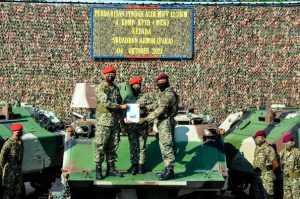
The handover ceremony of the MIFV on 4th October. BTDM
The story from the Fourth Mechanised Brigade Facebook page:
PINDAH ALIH KENDERAAN MIFV K200 A1 12.7 MM
PAHANG: 4 Kompeni Kor Polis Tentera Diraja (Mekanize) (4 Komp KPTD (Mek)) melaksanakan pindah alih kenderaan Military Infantry Fighting Vehicle (MIFV) 12.7 mm kepada Skuadron (Skn) Armor (Para) bertempat di Padang Kawad 4 Komp KPTD (Mek) pada 4 Okt 2021.
Pindah alih MIFV 12.7 mm dimulakan dengan acara menandatangani Nota Pindah Alih MIFV 12.7 mm di antara Pegawai Pemerintah 4 Komp KPTD (Mek) dan Pegawai Pemerintah Skn Armor (Para) disaksikan oleh Pegawai Memerintah 3 Rej KPTD dan Pegawai Staf 1 Teknikal Jabatan Arah KPTD.
Sebanyak tujuh buah kenderaan MIFV 12.7 mm telah dipindah alih kepada Skn Armor (Para) bagi mengekalkan kelangsungan dan relevansi kekuatan tempur Trup TD yang juga merupakan elemen utama Pasukan Aturgerak Cepat (PAC).
Program diakhiri dengan simbolik penukaran lambang formasi pada MIFV 12.7 mm, daripada 4 Komp KPTD (Mek) kepada Skn Armor (Para).
Perkara ini sejajar dengan Tonggak Pertama Perintah Ulung Panglima Tentera Darat Ke-28 iaitu Kelangsungan Misi Dan Kesiagaan.
– Markas Briged Keempat Infantri Malaysia (Mekanize)
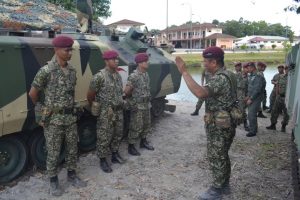
It must be noted that the Para Armour Squadron also operates at least two Adnan armoured ambulances (see picture above) so I guess the transfer of the MIFV will not be much a burden to the personnel. The transfer of the MIFVs also indicates that the unit will not have a light tank for at least another decade or so. There was talk of a tender for light tanks earlier this year but it died a natural death.
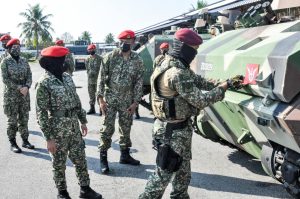
Personally I would think the 10th Para should be equipped with lighter vehicles, capable of being parachuted from RMAF air lifters but I guess the Army leadership wants to continue with the current order of battle. Why don’t we get air-dropped capable armoured vehicles from Russia or China then? I have no idea why, your guess is as good as mine, really.
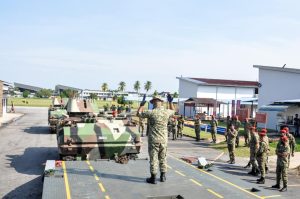
Anyhow, what about the Scorpions and Stormers then, will they be retired? Most likely though one cannot be 100 per cent certain in Malaysia.
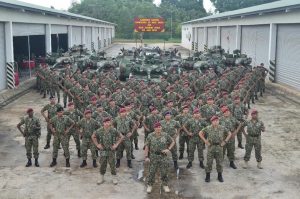
— Malaysian Defence
If you like this post, buy me an espresso. Paypal Payment

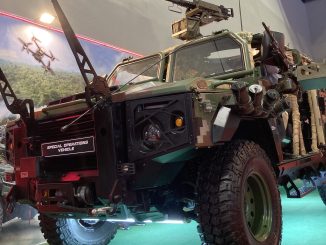

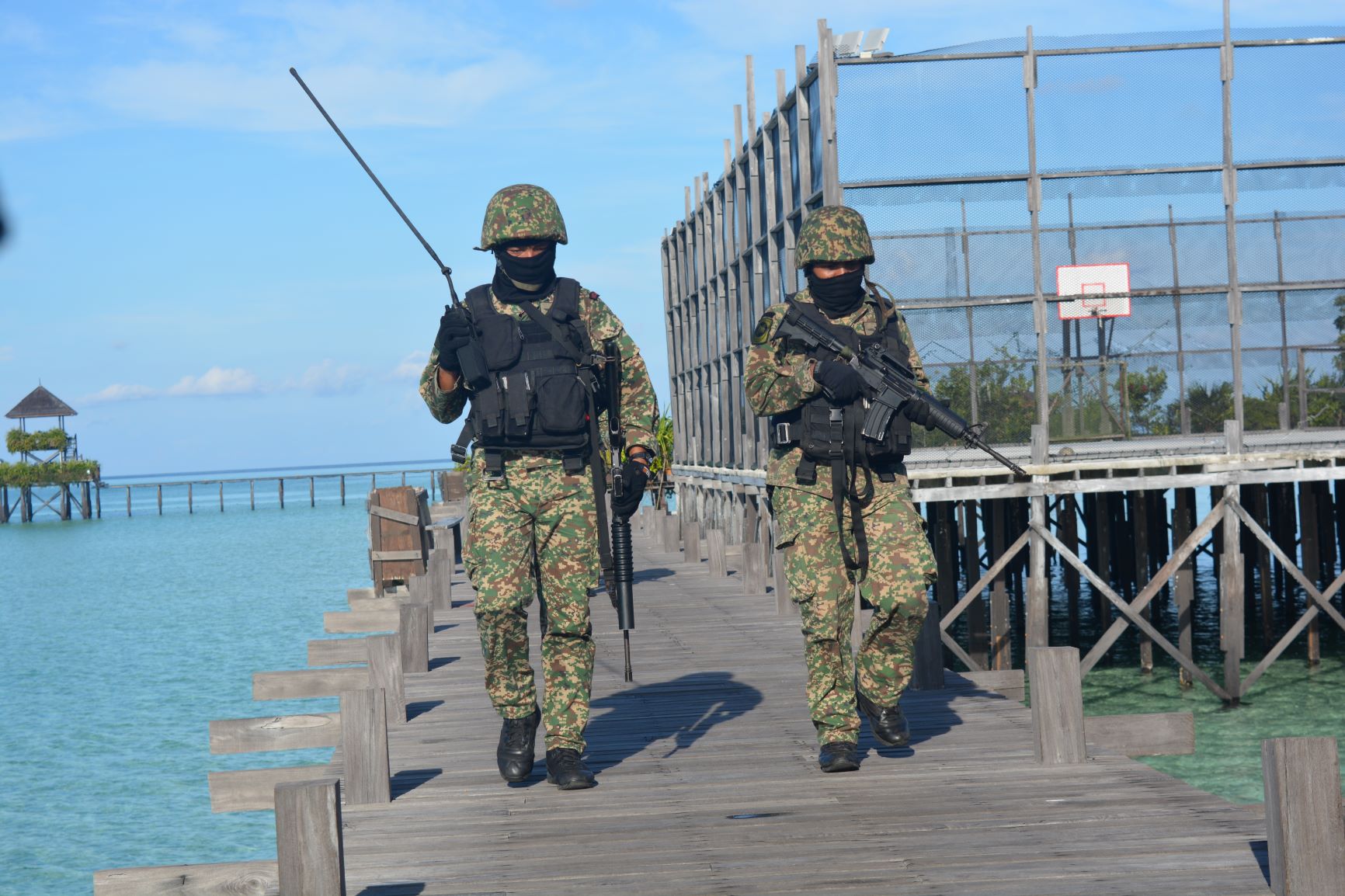
The whole purpose of hsving the unit is so we have a strategic reserve which can be deployed rapidly by land,sea or air. For this it needs a footprint as light as possible and adequate number of transports. Even deploying a single battalion by air and keeping it resupplied woukd take many sorties and would involve a significant part of the transport fleet. Having a IFV merely adds to the footprint and creates added strain on the unit’s logistics.
The unit is also suited to be deplyed for a limited period before being relieved by heavier units with more staying power. A MRAP type vehicle to equip part of the unit, namely the Pathfinders and Support Company, would make far more sense than an actual IFV.
As for air dropable IFVs, do we really need them? They will take up space which can be used for other things.
If we desire to enable parts of the unit to be motorised, whether for recce or fire support, can’t the role be fulfilled by a MRAP type vehicle? Yes some airbirne units have a need for IFVs which can be pallet rigged. I’m just not convinced we have the need.
Better yet lets just disband the para armor sqdn as they’ve got no armoured vehicles to operate..or ask the royal armor corps to absorb them..better that way
Or even better yet, set up an amphibious QRF unit with armor capability and release Para to do Para job
The MIFV are merely battle taxis and won’t have bearing on the frontline composition except that they no longer have armoured gun support (in theory) from the Scorpions’ retirement.
Atm its unrealistic to have air-droppable armoured units for Para simply because we lack the massive airlift capability to do such a thing. For one, we’d have to dedicate all or nearly all our airlifters, the Hercs & Grizzlys, to land a regiment-sized armour and troops plus munitions. Another matter is the launch point would need to be an equally massive airbase that could cater to such a fleet plus sufficient loadmasters & logistic crews. AFAIK only our large international airports have such capacities & resources.
I dont understand. Want to give something to the tip of the spear to keep it sharp, give something new. Why give old old equipment that is perhaps maintenance intensive to the tip of the spear?.
Dundun,
To be fair 10 Para oftens practices the amphib role [albiet the amphib transport rather than amphib assault role] but the army is too fixated on the deploying by chute role.
Firdaus,
The vehicles and men are part of 10 Para but are also from the Royal Armoured Corps.
Instead of fixating on IFVs, makes far more sense on improving the Brigade’s [a Regiment of a mere 18 guns in a 4 battalion Brigade] arty and engineering assets.
Makes far more sense to convert part of the Brigade to better deploy by rotary or other assets, as well as having a SF support role. There is a level of elitism and mystic associated with para units but times have changed. Depolying by chute is often impractical and leaves men prone to injuries.
There is a reason why many armies have converted their units to air assault ones and are not expanding their jump units.
Yes we do need a jump capable unit but we must be realistic and practical about what it can actually do. It’s also extremely resource extensive to maintain the capability.
The MIFV is much cheaper to maintain the Scorpions and Stormers
The large brigade sized PARA force is never designed to be deployed as a whole.
The 4 battalion force is needed so that malaysia can have 1 battalion of ready force on standby at all times, and 1 battalion would be on operational deployment (say in ESSCOM). 1 would be on rest after deployment, and 1 would be training for workup to prepare to be the ready force.
The PARA artillery regiment of 3 batteries is so that 1 is always ready to be deployed.
The PARA armor squadron consisting of 3 troops is so that 1 is always ready to be deployed.
gonggok – ”The large brigade sized PARA force is never designed to be deployed as a whole.”
Sorry but obviously… Who indicated otherwise?
gonggok – ”The 4 battalion force is needed”
On paper it’s great. In reality having just the needed airlift to move a single battalion, plus gear, plus keep it resupplied will be a huge strain on existing capabilities. Not too mention the huge resources needed to maintain the capability; i.e. each men requires a number of jumps a years to maintan currency and aircraft are needed. This, together with there being more practical means of insertion, is the reason why many armies have converted their airborne units to do other things and are not expanding such units.
gonggok – ”The PARA artillery regiment of 3 batteries is so that 1 is always ready to be deployed.”
Right. Great on paper. So assuming one a battalion is deployed, it has to be in a really low threat situation where a mere battery of 8 guns is sufficient. The point I was making is that rather than expending resources on IFVs; the cash would be better used expanding the unit’s arty component; as well as its engineering compionent. BTW the reason most of our brigade’s have only a single regiment of 18 or 20 odd guns dates back to the period when we faced a low intensity threat.
gonggok – ”The PARA armor squadron consisting of 3 troops is so that 1 is always ready to be deployed.”
A mere troop of 3 or so vehicles …. Actually the main reason why it’s of squadron size is because anything larger than that would be a huge strain on the unit’s ability to move and support it…
Even the British army; with a larger fixed and rotary wing to call on, a bigger budget, decades of experience and a larger pool of manpower; has only 3 active Para battalions [1 converted for SF support] and 1 TA one.
Other armies with a much higher tempo can sustain things with 3 units.
The reason we added another battalion is because there is an influential ”para” clique within the army and because we are still hooked/mesmorised with the elitism, machismo and mystic associated with ”paras’.. We could have done something much more practical and cost effective like converting an existing unit for the SF support role or into a future air assault unit.
Actually the main reason why it’s of squadron size is because anything larger than that would be a huge strain on the unit’s ability to move and support it…
Azlan’s spot on. We need the Paras but we can’t really assemble a massive jump plus air portable assets. Perhaps an amphibious assault unit is better but I remember that’s off the cards.
Let’s hypothetise. What is the possible scenario (however unlikely) of a foreign threat to Malaysia. The only thing I can think of is this: China, just like Imperial Japan 80 years ago would like some real estate in Malaysia to control the SCS. So the most likely place they might land is Sarawak, where they can also control the Singapore Strait with short and intermediate range missile. So, is 10 Para going to be the tip to the spear while more reinforcements arrive? Why not increase our military readiness in Sarawak…that new bare base in Bintulu is a start. If anything is going to happen, I think it will start in Sarawak. There might be an attack on Taiwan at the same time, so Allies like the US and UK might be preoccupied there and not be able to help us. It is almost the same scenario as WW2.
Tom Tom,
Incorrect. China does not need any real estate here to control the SCS. What it needs to do is to control access to it and create a constested zone, which it has done with its artificial reefs. Doing that makes it hard for others to effectively deploy and operate there. Similarly,China doesn’t have to physically seize any of our islands/reefs,merely to deny us acess.
The “tip of the spear” in the event of a conflict in the SCS will be the RMN and RMAF. Slight difference in China’s aims compared to Imperial Japan’s in WW2. Think about it. China desires the SCS because it improves its access to the sea routes which carry its energy supplies fron the Middle East and by extending its contested zone,improves its ability to mount ops against Taiwan.
People are obssesively fixated with China but we have longstanding unresolved overlapping claims with neighbouring countries, which at times came close to trouble.
Taib,
My preference is a bit more modest:( I’d prefer an amphib”movement/transport”[an adminstrative undertaking]unit,rather than an amphib “assault”[an operational undertaking]unit.
Such a unit would have made far more sense [we are a littoral nation whose main threats are in the maritime domain]but the para clique has strong influence and is fixated with the elitism, mystic and machismo associated with paras. It added a 4th battalion to a brigade from the onset lacked the needed resources to deploy and sustain the itself in anything more serious than a low threat scenario,even if only a single battalion was dropped.
@Taib
Para has done amphib exercises before, tho we lack the equipment for a shore assault role. Firstly we must ask ourselves if such a role is needed.
@TomTom
We have no hopes of taking on China in any scenarios. Even deterrence is token as they have far more resources in their semi-civilian fleet. In the first place, Imperial Japan and China have different agendas with regards to SEA, thus diverging focus and to handle China would require different strategy. Unlike Imperial Japan, China does not have a need to conquer Malaysia so we aren’t in any direct threat from it. Thus diplomacy & dialogue thru both front and back channels is the best way forward.
A unit whose primary purpose is to operate in a littoral setting makes sense. Its roles would or could include rapid insertion anywhere along the coast as a quick reaction unit to deal with unexpected contingencies or to support units already in place. It could also be used to garrison the Spratlys.
In line with its primary roles the unit would spend a lot of time practising ship to shore transfer using a variety of means and would have its own waterborne recce capability in the form of small craft. Naturally a lot of cooperation would be needed with the RMAF and RMN. It should have a small footprint, starting out along the lines of 2-3 companies, a scout/recce platoon, AD battery, mortar platoon,medical troop, suopport/engineering troop and a HQ element would be within our means.
First and foremost as an offensive tool, para units are easy and cheap to set up and maintain, and quick to deploy whilst being able to potentially deal the most strategic threat to potential adversary countries. Imagine a company of guys coming out of nowhere, seizing ports or airports or major power installations or switching/telecommunication centre and having enough firepower to either hold the line or destroy the infrastructure. That would deal the most damage. Also training, jumping out of airplanes on regular basis and stuff really enforce the professionalism and espirit de corps among the paratroopers which makes them a relatively better frontline combatants compared to other infanty units which in turn, contributed to the sense of machismo and mysticism surrounding para unit.
Hence my points at establishing an amphibious QRF unit. Para armor sounds oxymoronic in itself, let alone having them in practice. Even when we have 20+ transport aircrafts (+other commerical cargo aircraft that could be used in a pinch) we still doesn’t have the kind of strategic airlift capability to maintain para armor unit. At most they would need weapon carrier ala G wagon or probably something like Otokar Cobra. Armor/mechanized elements makes much more sense for Amphibious units and with the government is getting up to 3 MRSS it’s not like having amphibious QRF is unrealistic
Its not easy or cheap to set up or maintain a Para unit otherwise half of the Army be would para qualified already. And it is not cheap to deploy them especially in wartime. As it is only the Para brigade and the GGK operators are expected to be para qualified. Even the alternative of a heli-borne QRA unit is expensive. As for the amphibious capability, again its not a cheap capability to have and maintain. I remember a former RMN chief telling me that they need ships for amphibious operations which they have been seeking, at that time for almost 2 decades already.
Dundun,
You serious? As I never tire of pointing out : mantaining a jump capability is very resource intensive. Why do you think some armies have converted thei units and are not expanding them? Every single person has to make several jumps a year to mantain proficiency,deploying them and resupplying them takes airlift and is dependent on the enemy cooperating. Once they land they have limited self supporting caoabilities and are vulnerable to heavier enemy units.
As for “para armour” if we have the airlift and require our paras to drop deep into the enemy’s operational depth and move over long distances like the VDV, then fine : we don’t.
Sorry but if one is a professional well trained unit, one can be non para and still have the elitism and efficacy, if not better than para units. Maschismo and mystism only gets one so far, too much of it can be counter productive
As for amphibs ops, the MRSSs are to enable amphib “movement” not amohib “assault”- sharp distinction between both. Also, even if we had 5 MPSSs, we need the key enablers like sea and air escort, helicopters, landing craft, experience in combat loading ships, on beacheads if ports are not available, etc, etc,
We have the ability to deploy and sustain a single battalion sized formation in a non high threat environment, with another in reserve.
Even the Brit army only has 3 regular units and is focusing more an air mobility with rotary assets. We got carried away with the para elitism and the mystic. That’s why a small under resourced army, thanks to the para mafia/clique,like ours has 4 jump qualified units which looks great on paper but which we can’t afford to adequately equip – cosmetics.
It’s cheap in a sense that the only thing you need to invest is in the training and small arms (plus maybe some other hard hitting equipment like ATGW, mortar or 105mm howitzer). Compare that to raising a brand new armor brigade. Is it an apple to orange comparison? Maybe but since both armored and Para are used as our offensive tool in the event of a conflict, cost wise it’s cheaper to establish a para unit than any other conventional units within the army.
Giving our Para unit an armor that is supposed to be organic is challenging that we need to invest in more strategic transport, either by buying more A400M or getting an even bigger strategic transport aircraft. Hence why an armored recon vehicle like a scout car or Otokar Cobra is about the only “armored” vehicle that is sensible for para. Giving them something like MIFV or light tank is like asking them to do something that isn’t their jobs to begin with. They’re not part of a mechanized/motorized unit and they sure wouldn’t going to engage with enemy armor head on.
The navy is still pushing for MRSS so it make sense to establish amphibious brigade to utilize these ship. These amphibious brigade would make better use of MIFV or even light tanks than para unit simply due to different roles that they’re playing
@dundun
We simply don’t have the key factors for a viable amphib assault, for one it must have local air, sea & sub-sea superiority plus ability to jam enemy coms to ensure a successful landing, think Normandy. TLDM & TUDM just don’t have enough resources to vie against superior numbers that certain adversaries could throw at us.
Also questionable the landing size we could put out at once, each Makassar only holds 2 LCVP so a force of 3 MRSS only give a landing force of 6 LCVP each turn. In reality, even with 3 MRSS in the same operation, our amphib capability will be limited to uncontested landing at areas where docks or ports are unavailable.
Gonggok – “They’re not part of a mechanized/motorized unit and they sure wouldn’t going to engage with enemy armor head on.”
The whole idea of giving the unit Scorpions and Stormers was to provide a means of mobile fire support and to have an element which had a minimal level of protection.
To equip pathfinding elements, as well as support elements, which employ direct fire weapons, which in turn exposes them to direct fire, I woukd like a high mobility type MRAP vehicle [low ground pressure and a light overall footprint] with a certain level of protection against small arms fire and shell/mortar fragments.
Gonggok – ”The navy is still pushing for MRSS so it make sense to establish amphibious brigade to utilize these ship.”
– Amphib movement is only one reason why the RMN seeks MRSSs.
– At best we have the ability to sustain a single battalion size formation, for amphib ‘movement’ not ”assault”. We simply do not have the key enablers for anything more than that. Also, the MPASSs will not be configured for the assault role per see, neither will it have the deck space for more than 3 helis.
– Yes the army is fixated on ”paras” and the elitism and mysticism that comes with it. What we should have done however was convert an existing para unit into one configured for sea movement and operations – a much more practical and logical approach rather than adding a 4th para battalion to a brigade which already had limited support and engineering capabilities to begin with.
Gonggok – ”Giving our Para unit an armor that is supposed to be organic is challenging that we need to invest in more strategic transport”
You’re missing the point.. It’s not the transport per see but a host of other issues [explained in previous posts] inherent with raising, acquiring and maintaining a jump capability.
Gonggok – ”about the only “armored” vehicle that is sensible for para.”
It’s about something which fits their operational requirements and CONOPs. Different jump units have different reasons why they desire IFVs. Some don’t have any.
azlan, i did not say those things!
My apologies. It was Dundun.
Dundun – ”It’s cheap in a sense that the only thing you need to invest is in the training”
You’ve overlooked this despite it being mentioned repeatedly but the training plays a huge part.
Every single man has to be jump qualified and then has to make several jumps a year to maintain currency – RMAF transports are needed. On top of that skills such as rigging chutes, pellet rigging stuff, pathfinding, cooperating regularly with the RMAF and various other things have to be learnt and maintained. Armoured infantrymen in contrast don’t need these skills; they need combined arms skills which is inherently cheaper and less resource intensive than what a para requires.
Just as the earth is flat and not round; it’s an irrefutable fact [as Marhalim has also pointed this out] that raising and maintaining a jump capable unit is very expensive and resource intensive …..